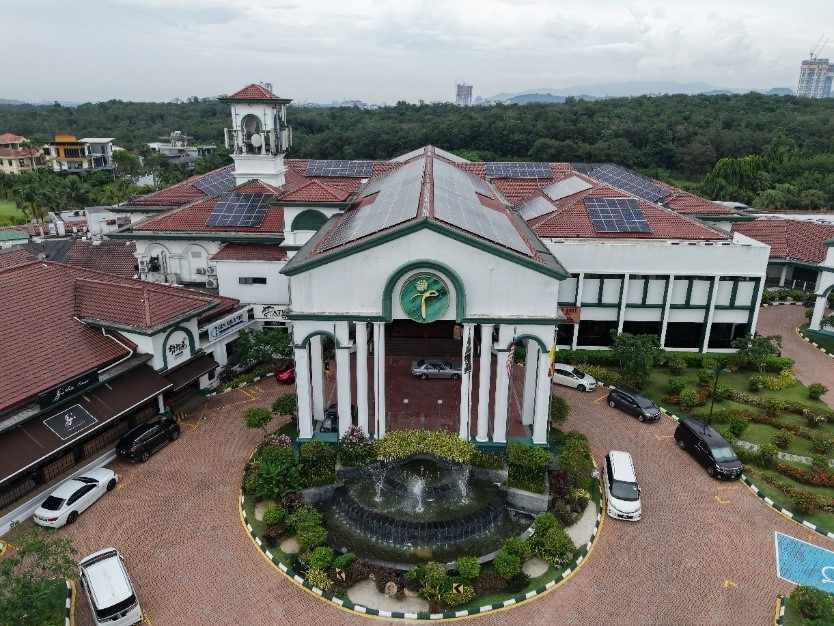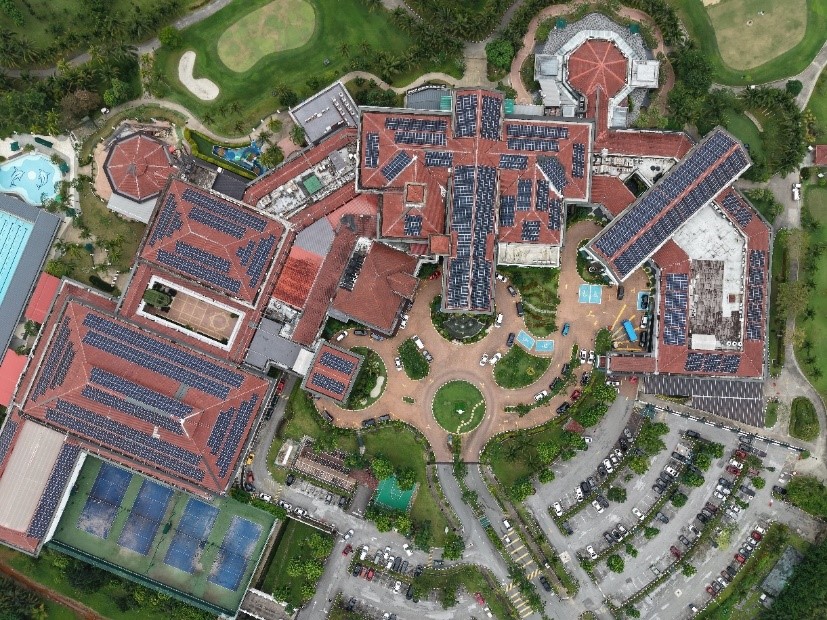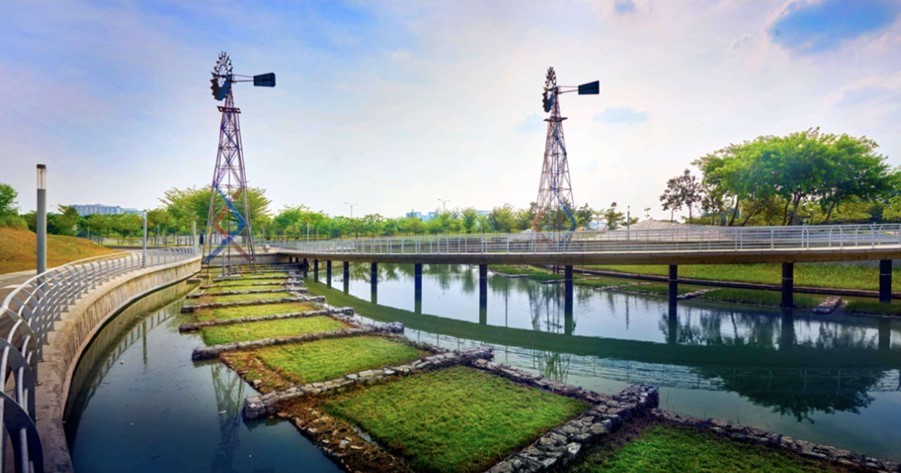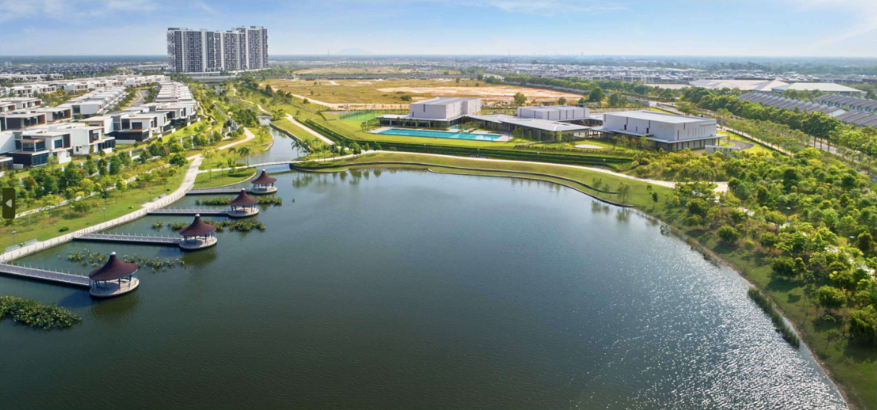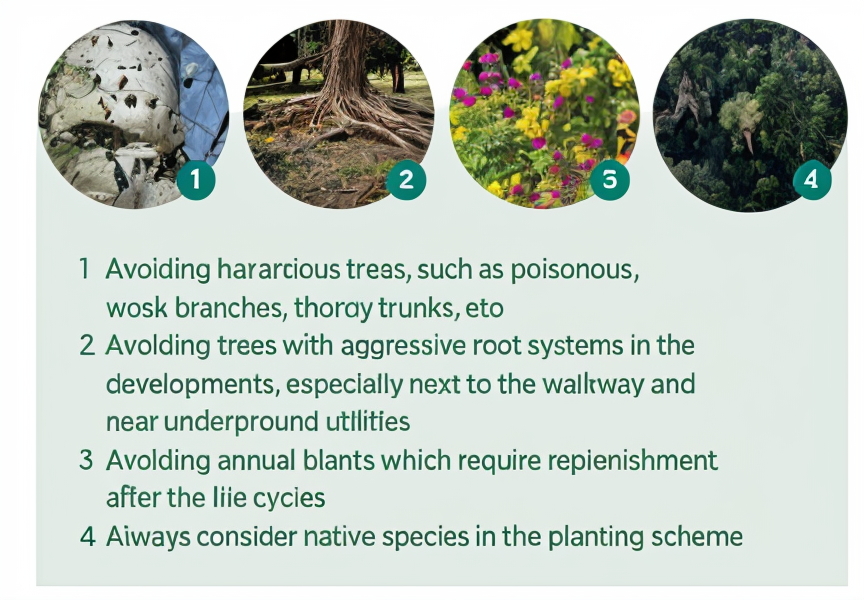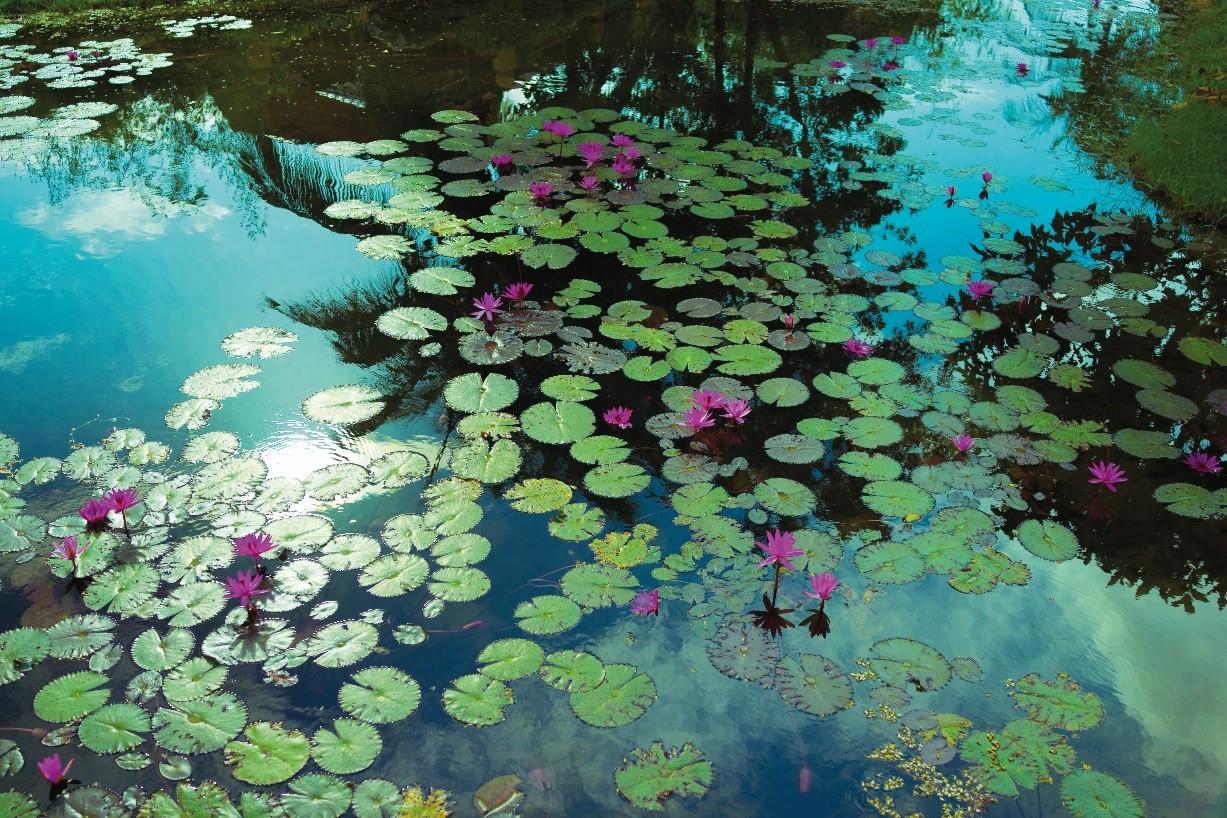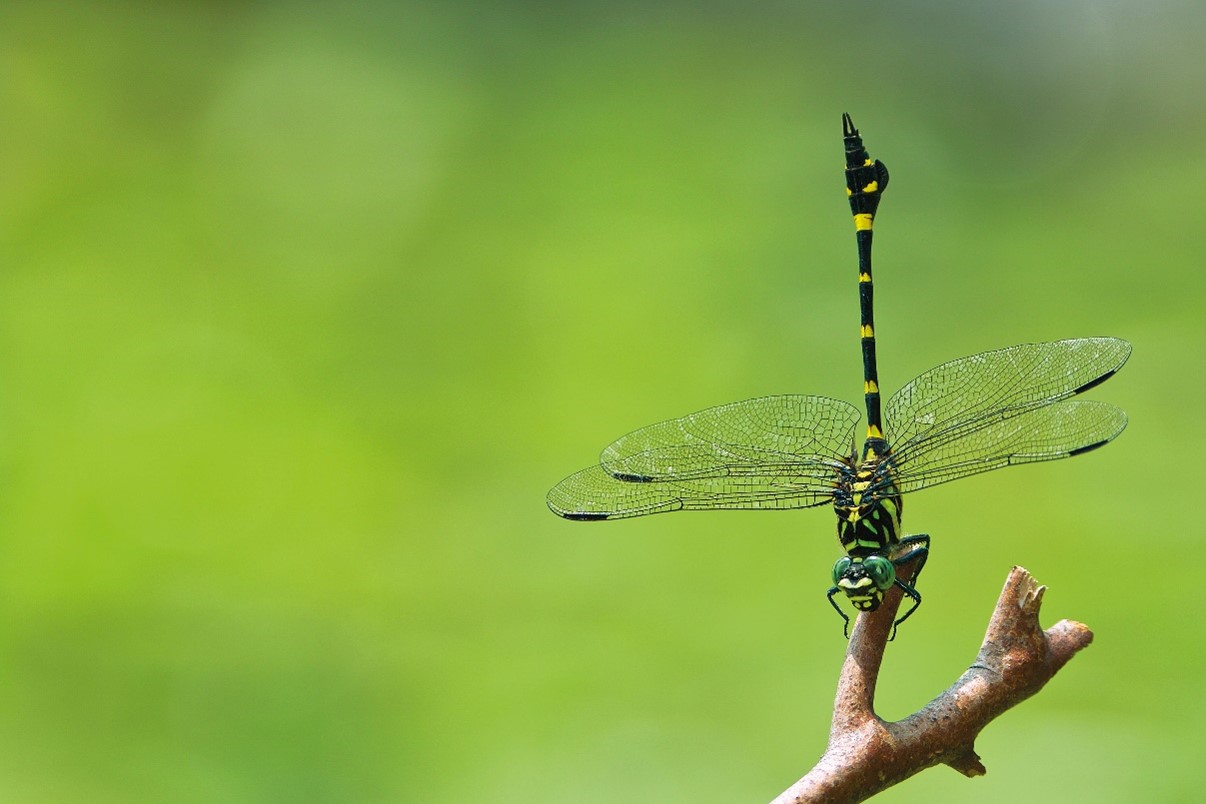Biodiversity Management
We are aware that land use change through our development and construction
activities has impacted existing habitats and ecosystems, leading to biodiversity
loss. Hence, we endeavour to protect biodiversity by incorporating conservation
measures and responsible project development planning. This is reflected in our
efforts to create a sustainable landscape within our developments. Although we
have yet to assess our existing operations for biodiversity risks and the size
and location of all protected or restored habitat areas, we aim to carry out a
biodiversity risk assessment in our future reporting cycle.
Currently, most of our developments are built on brownfield land or secondary forest,
which had mostly been cleared of their original vegetation beforehand. Additionally,
no rare, threatened, or endangered species of vegetation were found or removed from
most development sites. Among our efforts to enrich biodiversity in our developments
are the transplantation of mature trees, woodland planting, and the introduction of
dragonflies as a natural pest control method.
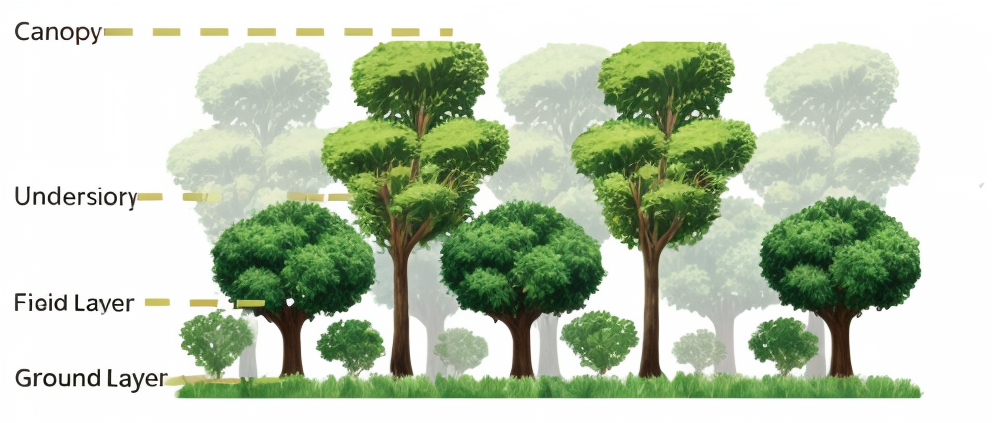
Enriching Forest Ecosystem
The Group planted 4,000 saplings in the central park of Tropicana Aman to
create a diversified woodland that will eventually form overlapping, continuous,
and interlinked tree canopies. Woodland was introduced to enhance greenery
and enrich the ecosystem, providing biodiversity. Structure of Woodland:
Overlapped, continuous and interlinked tree canopies
Nice green backdrops define the park boundary with softer treatment
The more different kinds of plants there are, the greater the animal diversity
Enriching Forest Ecosystem
To create a lush green oasis, more than 22,300 various plant species, consisting
of shrubs, turf, and trees, are planted at Tropicana Golf & Country Resort.
These attract many species of birds and colourful insects. The resort management
team has taken over 20 years to create this beautiful flora and fauna canvas around
the development. Staying true to the concept of sustainable green living, Tropicana’
s total landscaped area, including public areas, the golf course, and the clubhouse,
spans 300 acres, equating to 50% of the entire site area of 625 acres.
Our Green Lungs
Within the Tropicana Aman Central Park lies a 7km-long trail designed specifically
for walking, jogging, and biking. It is part of the landscape feature that promotes
the “Walking and Biking Community” concept of Tropicana Aman, featuring its iconic
yellow bike. The bike-friendly trail within the park is well connected with the
walkway along the streetscape that is connected to each residential parcel.
Neighbourhood areas are connected by the Green Ribbon network and recreation gardens.
Parks are designed for activities for various ages and abilities, increasing street
permeability and inviting the community into and through the site.
Friendly and direct access
Gazebos and seating areas are provided at certain spots within the Central Parks
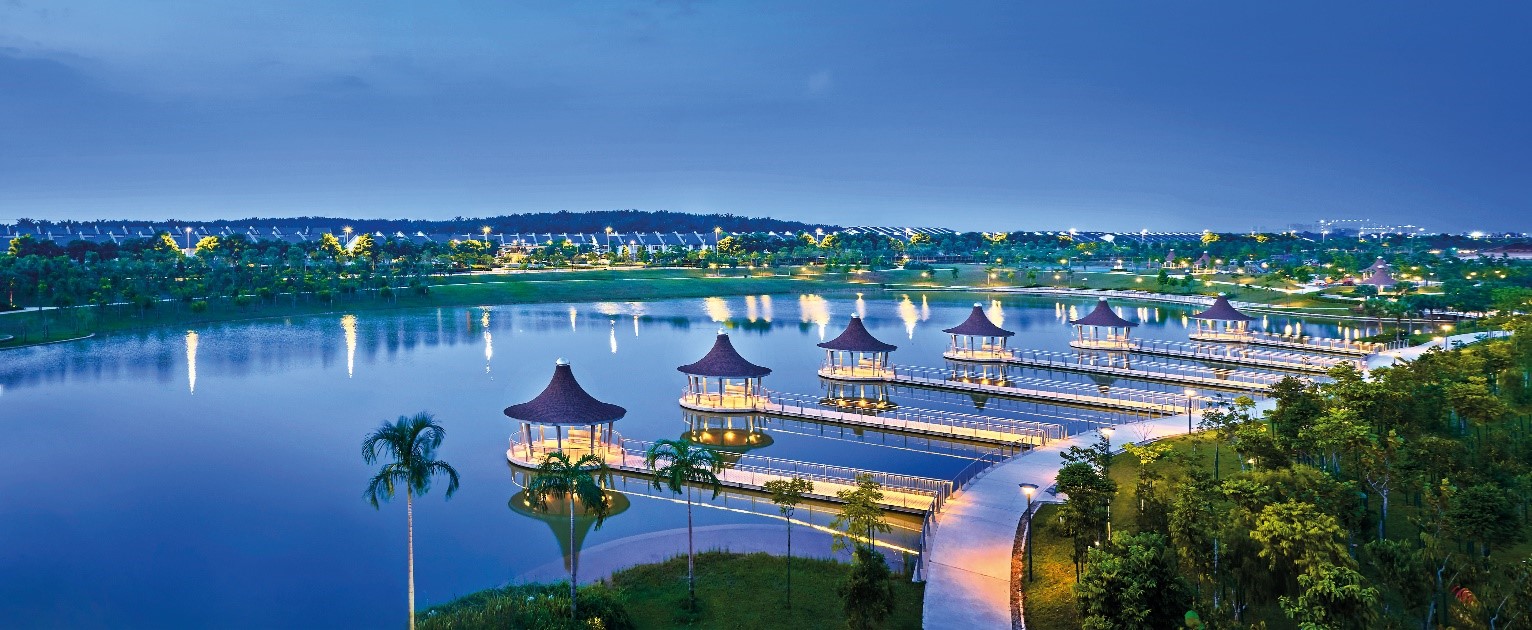
Tropicana Aman Central Park which spans
80-acre features two main parks being the
East Lake Park and the West Lake Park
Our Green Features
Selection of leafy plants to create lush greenery
At least 10% of green spaces are crafted in the development
To fulfil the growing demands of green lungs within the developments
A wide variety of greenery is used in the landscaping of Central Parks to create lifescapes that grow with the residents
Approximately 2,400 numbers of trees and palms have been planted in the Tropicana Aman Central Park creating an environment that is warm and inviting
Estimated 1,500 numbers of trees and palms were planted in Tropicana Heights along the streetscape and Central Park
Vertical green for high-rise developments such as façade treatment for car park floors such as Tropicana Grande and Tropicana Metropark Pandora Residences offers benefits such as purifying the air, decreasing and regulating temperatures, softening the building façade with vertical green while promoting biodiversity.
Integrated Pest Management – Dragonfly Pond Project
Tropicana pioneers the use of dragonflies as a biocontrol mechanism. As one of the
country’s leading developers, Tropicana is the first to deploy dragonflies to control
pests naturally in Tropicana Golf & Country Resort. The pilot project to release 88
larvae of Red Glider Dragonfly (Tramae transmarina) into a new man-made pond in TGCR
on 24 September 2021 is a collaboration with well-known dragonfly expert Dr Choong
Chee Yen from Universiti Kebangsaan Malaysia (“UKM”).
Our Dragonfly Pond is a flagship project to breed and sustain a healthy
dragonfly population at our golf course as a means to apply biological
control to mosquitoes in the surrounding area, which is still thriving
to this date. Dragonflies are known natural predators of mosquitoes and other
insects, thus a commonly used integrated pest management (“IPM”) measure has proven
to be effective in the long term. Currently, there are a total of 14 species of
flying adults of dragonflies and damselflies throughout the day. These dragonflies
feed on mosquitoes and other pests, serving as a natural control mechanism with a
hunting efficiency rate of up to 95%. Natural controls such as dragonflies, birds,
bats and minnows enhance the biodiversity in a given site, in line with ESG
principles. They also avoid the introduction of chemical or bacterial agents into
the site’s existing ecosystem, seen in conventional controls such as pest fogging
and mosquito dunks utilising targeted bacteria such as Bacillus thuringiensis
israelensis to control larvae populations.
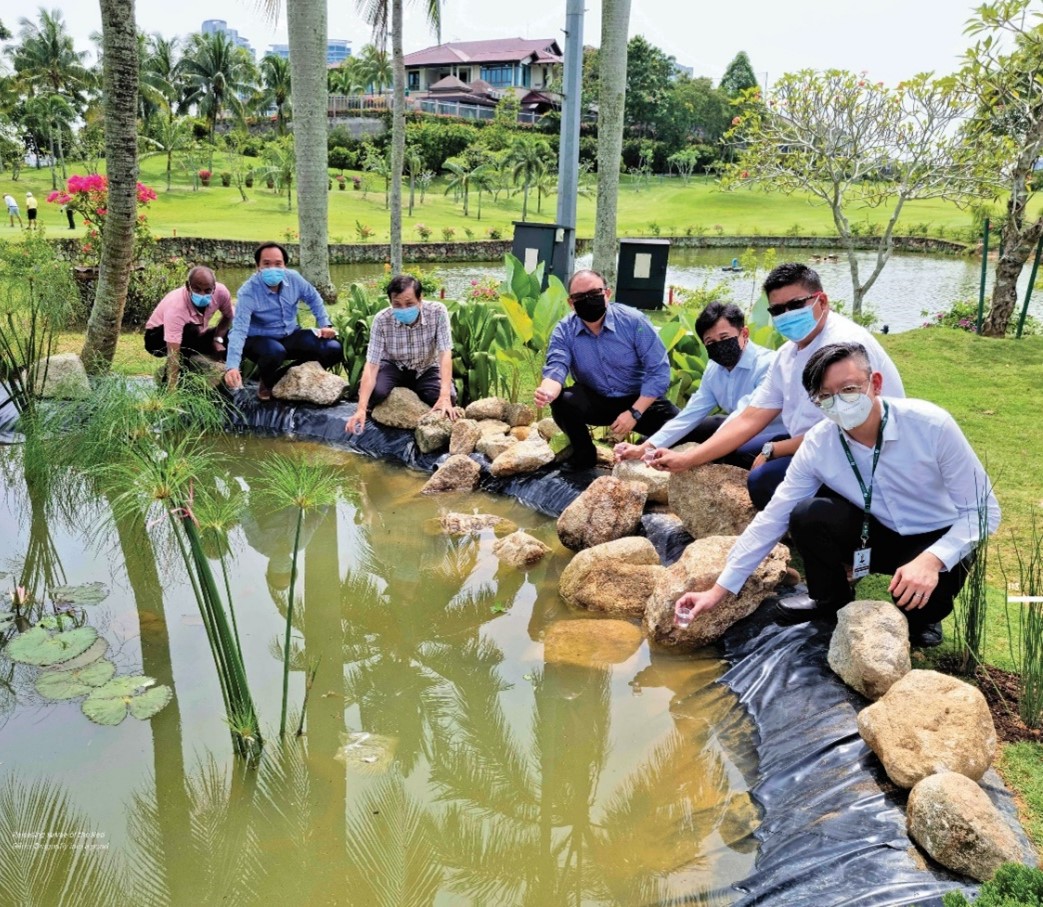
Dragonflies & Damselflies Species at Tropicana Golf & Country Resort
1. Saddlebag Glider (Tramea transmarina)
2. Blue Dashers (Brachydiplax chalybea)
3. Common Flangetails (Ictinogomphus decorates)
4. Crimson Dropwings (Trithemis aurora)
5. Variegated Green Skimmer (Orthetrum sabina)
6. White-barred Duskhawks (Tholymis tillarga)
7. Sultan (Camacinia gigantea)
8. Yellow-barred Flutterers (Rhyothemis Phyllis)
9. Scarlet Skimmers (Crocothemis servilia)
10. Blue Adjutants (Aethriamanta Aethra)
11. Chinese Greenwings (Neurobasis chinensis)
12. Common Bluetails (Ishnura senegalensis)
13. Blue Sprites (Pseudagrion microcephalum)
14. Variable Wisps (Agriocnemis femina)
